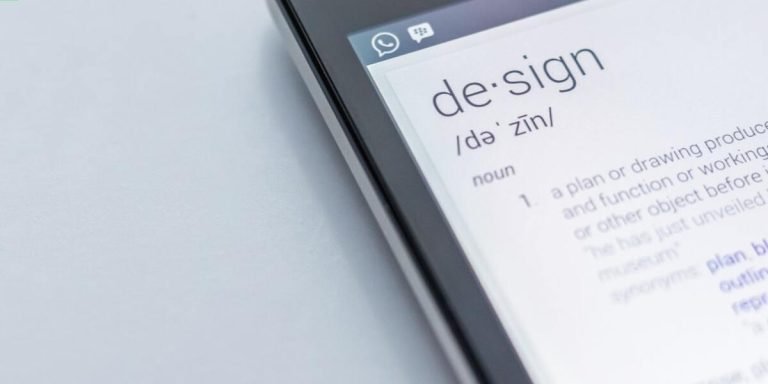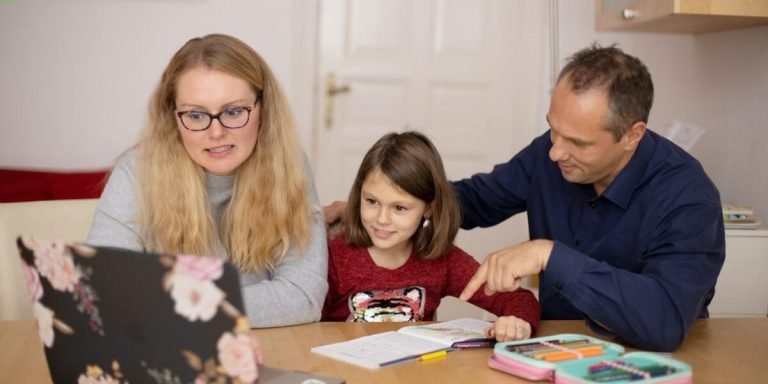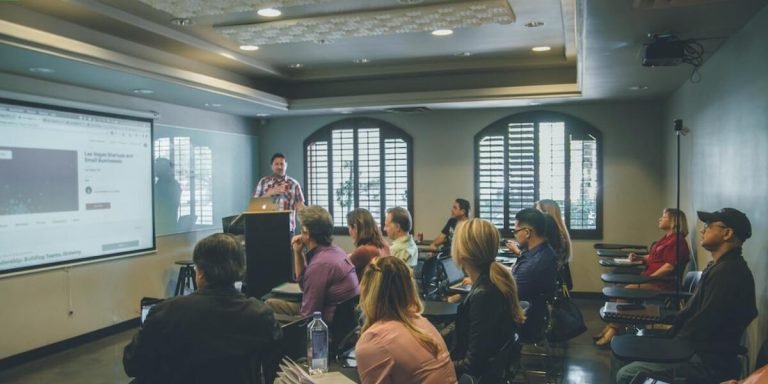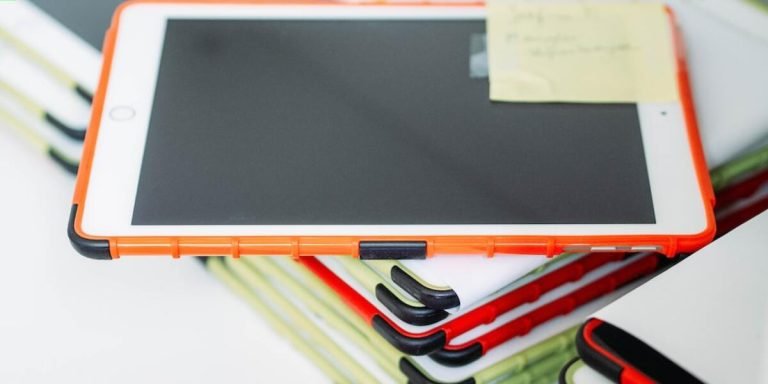Blended Teaching: A Modern Approach to Childhood Education
Blended teaching, a term that’s gaining momentum in the world of childhood education, represents an innovative approach to learning leveraging both traditional classroom methods and modern technology. This fusion not only piques interest but also empower students with tools to become more active contributors rather than being passive recipients of information.
As we delve deeper into this blog post, we’ll explore how this incorporation manifests itself within our classrooms and affects children’s learning journeys. More specifically, we will focus on “Technology Integration in Education”, discussing its inherent benefits as well as guiding parents and educators about effectively implementing it for an enhanced educational experience.
Did you know?
Blended teaching combines face-to-face instruction and online learning, a hybrid model that has been found to increase student engagement by 59% compared to traditional classroom teaching methods (Proctor, et al. 2013).
Understanding Blended Teaching: The Core of Modern Education
As we strive to keep abreast with the rapid advancements in technology, it’s of great importance that our educational system reflects this transition. This change can be seen vividly through the implementation of blended teaching methods. Blended teaching is a holistic approach combining traditional face-to-face classroom experiences and online learning opportunities.
By integrating digital resources into class lessons, educators are able to create an interactive environment where students actively engage more well-rounded learning processes. The core essence lies not just within digitizing books or using flashy presentations; rather it’s about leveraging technological tools as means to foster understanding and facilitate communication while sustaining human connection traditionally imbued in pedagogy.
In 2023, classrooms consist far beyond four walls filled with desks and a chalkboard at the front. Today’s education leverages modern tech devices like VR headsets for virtual field trips or AI-driven chatbots providing personalized study guides based on each student’s unique needs – all part of initiatives driven by blended teaching strategies.
These digital integrations might seem intimidating initially due to their sophisticated nature but fear not! As parents and educators alike familiarize themselves with these new techniques over time they will find them incredibly priceless assets facilitating effective pupil engagement whilst ensuring tailored content delivery suiting every learner individually.
Defining Blended Teaching in the Current Educational Landscape
“Blended teaching”, a term that has been sweeping the education landscape, is more than just jargon. It signifies an innovative approach to imparting knowledge by combining traditional face-to-face instructions with digital learning techniques.
In 2023’s educational panorama, blended teaching isn’t optional; it’s quintessential. Today’s tech-savvy generation demands an interactive and engaging learning environment where they can access their lessons anytime and anywhere – a need successfully bridged by this method.
To start with understanding what blended teaching is exactly about: imagine taking the best elements from both offline classroom sessions and online resources, then blending them together for optimized student comprehension. While in-person instruction upholds human interaction aspects vital in promoting communication skills among students, integrating technology ensures accessibility of vast information sources at learners’ fingertips resulting in self-paced personalized education.
Key Components and Models of Blended Learning
Blended teaching is transforming the educational landscape, fuelling 21st-century learning in an unprecedented way. It’s a compelling approach that marries traditional classroom instruction with online learning to offer students a multifaceted education experience.
One of the critical components of blended teaching lies in its flexible nature. This flexibility allows for customization based on student needs while also catering to different learning styles and paces. With blended teaching methods, educators can choose what proportion of direct teacher-led training or independent e-learning activities their class would benefit from most at any given time.
Technology integration plays a significant role here by facilitating smooth transitions between classroom and digital sessions as well as providing engaging content that encourages active participation from learners which eventually leads to better comprehension and retention rates.
Next comes differentiated instruction; another core component where teachers individualize instructions depending upon student capabilities using data-driven insights derived from technology platforms like Learning Management Systems (LMS). Thus enabling personalized learning experiences than one-size-fits-all instructional design modeling.
In terms of types or models for implementing this pedagogical strategy, there are mainly four:
1) Rotation model: Students rotate – either on fixed schedules or discretionarily – between online self-guided study periods and face-to-face teachings systematically within same physical classrooms.
3) A la carte model: Online only classes supplementing conventional schooling giving students opportunity attending courses not locally offered.
The Impact of Technology Integration on Teacher-Student Dynamics
The advent of technology into the world of education is significantly altering teacher-student dynamics. This change, primarily driven by blended teaching methodologies, has become more evident in 2023 when schools globally have embraced these methods wholeheartedly. With this integration comes innovative ways for teachers to interact with their students, thus fostering a dynamic learning environment that was once hard to imagine.
As part of the blended teaching model, traditional face-to-face classroom activities are combined with online assignments and multimedia resources effectively. Teachers now find themselves harnessing technological platforms not just to deliver knowledge but also as tools aiding interactive communication with students beyond school hours. Such constant accessibility facilitates prompt feedback loops between both parties leading towards improved academic performance and greater personal growth amongst children.
Moreover, technology gives students an opportunity for self-paced learning which can be highly empowering as it promotes independent thinking while simultaneously accommodating different styles or speeds at which individual students learn best. In effect, educators roles shift from being sole providers of information to guides helping children navigate through a plethoraally challenging digitalized curriculum reinforcing critical-thinking skills thereby cultivating lifetime learners out off today’s tech-savvy youngsters.
How Tech Tools Facilitate Personalized Learning Experiences
The rise of technology in educational settings continues to reshape the teacher-student dynamics. One pivotal aspect is how these tech tools facilitate personalized learning experiences, acting as a bedrock for blended teaching.
Blended teaching utilizes both online digital media and traditional methods by integrating them into the curriculum. This adaption enables teachers to cater their instruction according to individual student’s pace, style and capability – thus fostering an environment that celebrates diversity in learning abilities instead of suppressing it under one-size-fits-all model.
In this context, let’s take a look at some ways tech tools enhance personalization:
1) Tech Tools Assist Individualized Instruction:
Tech-integrated platforms often provide real-time data about students’ performance enabling educators to track progress instantly and adjust plans accordingly rather than waiting for quarterly report cards or parent-teachers meetings only.
Various interactive apps allow students not just passive recipients but active participants during lessons like Kahoot! That promotes collaboration through quizzes while strengthening comprehension simultaneously – making education more engaging than ever before!
Enhancing Collaboration Through Digital Platforms
The introduction of technology into classrooms brings in a wave of change, especially in the teacher-student dynamics. Digital platforms have been at the forefront of this shift, enabling enhanced collaboration and fostering blended teaching methods.
In our present digital age where 2023 shows us even more advancement on these fronts, technology integration has allowed for improved communication between students and teachers despite geographical barriers. This marks an era where learning is not confined to physical spaces but spills over onto various online platforms that provide opportunities for interactive engagement.
One way we can see this impact specifically is through collaborative tools such as shared document editors like Google Docs or Microsoft Teams which allow multiple users to edit documents simultaneously from different locations. Such applications make it possible for both educators and learners alike to contribute towards projects effectively, seamlessly merging individual efforts into collective accomplishments.
Furthermore , educational apps enhance interaction between members by providing instant channels for feedback or questions ensuring continuous dialogue alongside traditional education methods. They also offer features allowing teachers o track progress with real-time updates making them powerful assistants when it comes to personalized instruction strategies.
Evaluating the Success Metrics for Blended Teaching Initiatives
As we navigate through the third year of this decade, technology in education continues to be integral. The advent of blended teaching initiatives is a testament to this progress. Blended learning involves integrating traditional classroom techniques with digital and online educational technologies.
In evaluating success metrics for blended teaching initiatives, it’s crucial first to understand what these terms mean in 2023. Essentially, blended instruction refers to merging face-to-face lessons with computer-mediated activities which students can access at their convenience — making sure there are meaningful interactions both physically and digitally.
The key lens used in assessing the effectiveness of such an initiative revolves around student outcomes, engagement level, feedback mechanism, adaptability quotient among others. A successful metric would indicate improved performance from learners who’ve been exposed to interactive web-based content along with standard pedagogical methods.
It’s also important that educators consider whether students feel engaged and satisfied by the blend between online learning materials and traditional class sessions when determining if a school system’s adaptation has proved effective or not – particularly as remote schooling options continue evolving rapidly under changing circumstances brought on by global events over recent years leading up ’til now (2023).
Setting Benchmarks and Monitoring Progress in a Hybrid Classroom Environment
As part of an effective blended teaching approach, the importance of setting benchmarks and vigilantly monitoring progress cannot be overstated. In our technologically connected era, it’s critical to ensure that these hybrid classroom environments are fostering productive learning experiences.
Following a few strategies can help educators effectively track and monitor student progress in this integrated environment.
Firstly, establish clear goals. The success metrics for blended teaching initiatives should not diverge from traditional ones. Understanding what students need to learn by the time they finish a particular section or course is crucial.
With defined objectives in hand, we initiate actionable roadmap suitable for digital platforms as well as classic classrooms.
Secondly emphasis on routine assessments mustn’t wane just because classes now occur partly online—an aspect of early childhood education that remains unchanged regardless of medium used.
Online quizzes synchronized with learning modules are useful tools here! They readily provide insights into each child’s understanding & retention levels about lessons taught; thereby paving way towards improved tutoring methods if required.
Thirdly create a tracker for your observations – Evaluating learner behavior both offline and online helps pinpoint areas needing attention faster than relying solely on test scores & report cards.
Students express themselves differently across varying interactive landscapes—actions often speaking louder than words!
Analyzing Student Performance Data to Inform Instructional Strategies
Analyzing student performance data is a critical element of blended teaching, a method that combines traditional face-to-face learning with technology-based instruction. This unique blend allows educators to leverage the strengths of both online and in-person education methods for optimal results.
To make better use of this innovative approach, we need comprehensive metrics that evaluate success. One such metric involves assessing students’ academic progress through their respective scores or grades. But it’s not just about raw numbers; understanding how these numbers come about can give insights into learners’ knowledge retention levels and areas where improvement may be required.
Technology integration enables us to collect real-time data on various aspects like participation rates, assignment completion durations, quiz outcomes etc., offering an accurate picture of students’ grasp over concepts explained during lessons in classroom settings as well as those learned independently online.
These performance reports reflect the potential benefits (or drawbacks) related to specific instructional strategies executed within blended teaching frameworks – something invaluable for making informed decisions concerning future course-planning endeavors targeted at achieving overall improved educational quality .
Conclusion
In conclusion, the diverse strategies of blended teaching enable a seamless and enriching educational journey for our youngsters. It empowers educators to flexibly design comprehensive lessons that hone necessary skills in children while also fostering their emotional well-being. Blended teaching is not just an influential trend; it’s a revolutionary stride towards learner-focused education, combining traditional methods with digital resources to fit into every child’s unique learning pace.
We hope this article has given you valuable insights into the world of blended teaching. For more enlightening articles on childhood education practices and how they can be adapted for your young learners at home or in school be sure peek around our website. Browse through various informative topics tailored especially for parents and teachers like yourself who believe in nurturing potential from early years onward within each child’s individualized learning curve.







